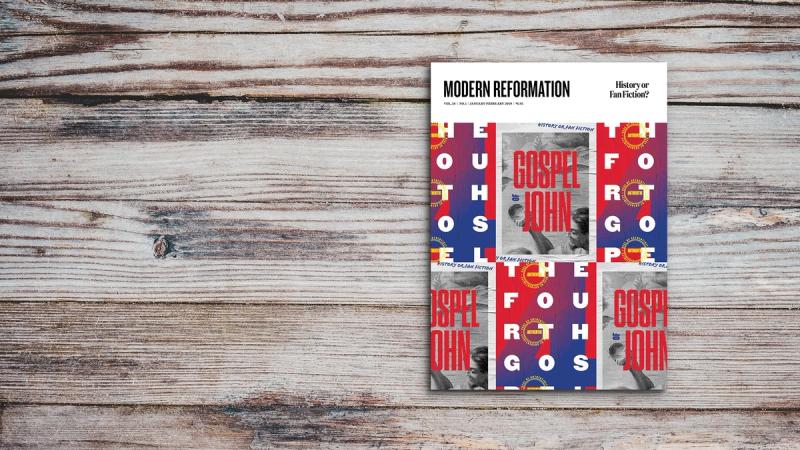“Lord, how many times shall I forgive my brother or sister who sins against me? Up to seven times?” (Matt. 18:21–22)
“Pray then like this . . . ‘Forgive us our debts, as we also have forgiven our debtors.’” (Matt. 6:9, 12)
“If one has a complaint against another, [forgive] each other; as the Lord has forgiven you, so you also must forgive.” (Col. 3:13)
“Let all bitterness and wrath and anger and clamor and slander be put away from you, along with all malice. Be kind to one another, tenderhearted, forgiving one another, as God in Christ forgave you.” (Eph. 4:31–32)
“And Jesus said, ‘Father, forgive them, for they know not what they do.’” (Luke 23:34)
It is clear from this mere sampling of Scripture passages that God calls us to forgive one another—with Jesus as the ultimate example from the cross. Knowing this biblical mandate is one thing (along with loving our neighbors as ourselves); it is quite another to put it into practice—especially when the grievance remains painfully strong.
Forgiveness, however, is actually vital to our overall well-being. Holding grudges is not healthy—spiritually or physically. Anne Lamott famously said that holding a grudge is like drinking rat poison and waiting for the rat to die. It doesn’t work, and it’s just plain stupid and harmful to the one holding the grudge. And besides, Jesus says we need to forgive or God will not forgive us (see Matt. 6:14–15). We know we need to do this, but where do we start when the scars run deep? And how do we do this, not only on an individual basis but also collectively?
This is the basis for The Book of Forgiving by Anglican archbishop and Nobel Peace Prize winner Desmond Tutu and his daughter Mpho, also an Anglican priest at the time of writing. Most of us are familiar with the aftermath of apartheid in South Africa and the country’s efforts to mend itself through the Truth and Reconciliation Council, over which the archbishop presided as chair. The stories of forgiveness during this era are simply amazing—wives forgiving their husbands’ murderers, parents forgiving their child’s murderers, victims forgiving those who tortured them, and many other poignant examples of grace. After twenty-seven years in prison, Nelson Mandela overcame his anger and forgave those who had imprisoned him—seeking to bring peace to his country as their first duly elected president (and also winning the Nobel Peace Prize). All of this, Tutu states, was to avoid bloodshed and to dismantle the otherwise never-ending circle of retribution. They sought to follow Jesus in forgiving and even loving their enemies, instead of the self-destructive vendetta of an “eye for an eye”—for as Gandhi said, “An eye for an eye leaves the whole world blind.”
We all desire God’s reconciling love and peace in our lives and in our world, but how do we ourselves make this first step toward practicing forgiveness as God commands us? I believe that The Book of Forgiving is beneficial in providing concrete steps here, as evidenced by the subtitle The Fourfold Path for Healing Ourselves and Our World. Of course, MR readers know that only God himself can heal this broken, fallen world. But as we saw in just the few Scripture passages above, God still calls us to do our part in forgiving one another—which essentially is healing for ourselves and for the world around us.
As the subtitle suggests, forgiveness is a fourfold process: (1) Telling the Story, (2) Naming the Hurt, (3) Granting Forgiveness, and (4) Renewing or Releasing the Relationship. Part one of the book is titled “Understanding Forgiveness” and includes helpful chapters on why we should forgive and on understanding what forgiveness is not. Part two lays out this fourfold path in helpful detail, and part three—“All Can Be Forgiven”—deals with needing forgiveness from others and also from ourselves, concluding with what a “world of forgiveness” could look like for both individuals and entire nations. In the introduction, the archbishop writes:
Forgiveness is truly the grace by which we enable another person to get up, and get up with dignity, to begin anew. To not forgive leads to bitterness and hatred. Like self-hatred and self-contempt, hatred of others gnaws away at our vitals. Whether hatred is projected out or stuffed in, it is always corrosive to the human spirit. (23)
In chapter 3, “Understanding the Fourfold Path,” the authors provide an illustration of two different “cycles.” In the “Revenge Cycle,” we have “hurt/harm/loss” followed by “pain.” At this juncture, there is a choice given. We can choose to remain in this Revenge Cycle and move next to “harm” and “reject shared humanity,” which is naturally followed by “revenge/retaliation/payback” and “violence/cruelty.” Or, we have the option of exiting this continuous loop by “choosing to heal,” leading us then upward to the “fourfold path” along the “Forgiveness Cycle.” Although they call this a cycle, it’s really a ladder with four ascending rungs—the fourfold path—away from the Revenge Cycle and into healing.
Throughout the book, by way of personally illustrating this fourfold path, Mpho Tutu shares honestly with readers her own painful story of a tragedy that took place in her home—in her daughter’s bedroom. A young South African woman, Angela, lived with them and helped take care of the household. One day when Angela was alone in the house, a robber broke in and brutally murdered her. In the first step of the “fourfold path,” Mpho “tells the story” of finding Angela’s body (which is hard to read due to the graphic detail she provides as part of her healing process). She then “names the hurt,” describing the anguish she and her family experienced afterward. Not only was the murder devastating; she also felt that neither she nor her family would ever be safe again. Mpho writes, “It makes everything feel so out of control. I have so much fear and so much anxiety and always this sadness and grief mixed in and touching everything and everyone” (107). In the next chapter, Mpho talks about “granting forgiveness,” which was especially hard since the alleged twenty-two-year-old murderer (whom she actually knew) was never convicted. In seeking this healing through forgiving, Mpho writes,
When you harm another, you also harm yourself. His humanity suffered from his own inhumane act. I can tell you this feeling of sadness and empathy for the murderer was something of a shock to me, and I believe this was my personal open door to forgiving. (135)
This “open door to forgiving” was Mpho’s way out of the “Revenge Cycle” onto that four-step ladder upward to healing. Finally, in “Renewing or Releasing the Relationship,” Mpho struggles with whether or not to maintain her relationship with this young man. She desperately wanted to know if he really had committed the murder and, if so, why. If he needed money, then why didn’t he just ask Mpho for it? Could she help him now? Not knowing the answers to these questions, she chose to forgive him and move on. Although it was easier to do so “intellectually”—“emotionally,” she writes, “I’m not quite there yet, because it still hurts, and I know there is still healing work to be done” (156).
Although this is the personal story that runs throughout the book, there are many other equally powerful stories of atrocities, tragedies, and forgiveness. Indeed, this can be a hard book to read because of the disturbing facts of these stories. As the archbishop writes, we are capable of committing the most horrific atrocities against one another, and yet we are also capable of great love when we recognize our shared humanity. When we have a tragedy in our lives, we can be overwhelmed at the love and support that comes flooding in from those around us—even from virtual strangers—or we might be the ones there to hold up our grieving brother or sister.
One important takeaway from this book is the renewed (or maybe even awakened) awareness of our shared humanity (what Tutu calls Ubuntu). As we most painfully know, we are fallen creatures who are as frail as the dust itself, who do what we don’t want to do and don’t do what we want to do. But, along with the apostle Paul, we know that Jesus has indeed set us free from this vicious cycle. As the archbishop writes:
For Christians, Jesus Christ sets the pattern for forgiveness and reconciliation. He offered his betrayers forgiveness. Jesus, the Son of God, could erase the signs of leprosy; heal those broken in body, mind, or spirit; and restore sight to the blind. He must also have been able to obliterate the signs of torture and death he endured. But he chose not to erase that evidence. After the resurrection, he appeared to his disciples. In most instances, he showed them his wounds and his scars. This is what healing demands. . . .
The invitation to forgive is an invitation to find healing and peace. In my native language, Xhosa, one asks for forgiveness by saying, “Ndicel’ uxolo” (I ask for peace). (24)
If we are truly to let the peace of Christ rule in our hearts, then we need to learn to forgive one another, recognizing our shared humanity, made in the image of God. Rejoicing with those who rejoice, suffering with those who suffer, and forgiving when “sinned against.” In The Book of Forgiving, I personally found help in unloading a crushing burden I had been carrying for years—finding (through the grace of God) my way out of that cycle of revenge by finally choosing to heal.
Patricia Anders is managing editor of Modern Reformation and editorial director of Hendrickson Publishing on the North Shore of Boston.







